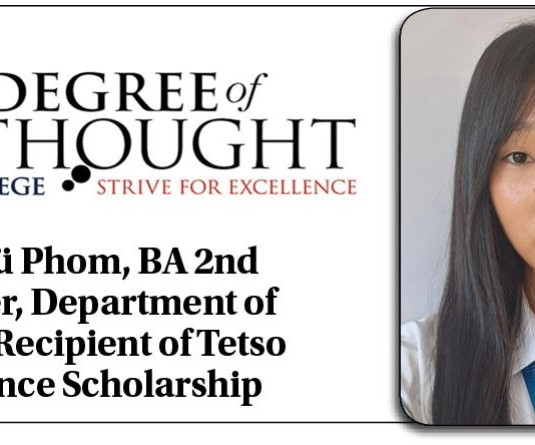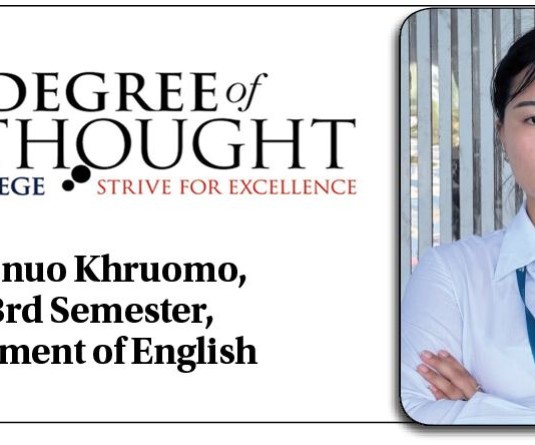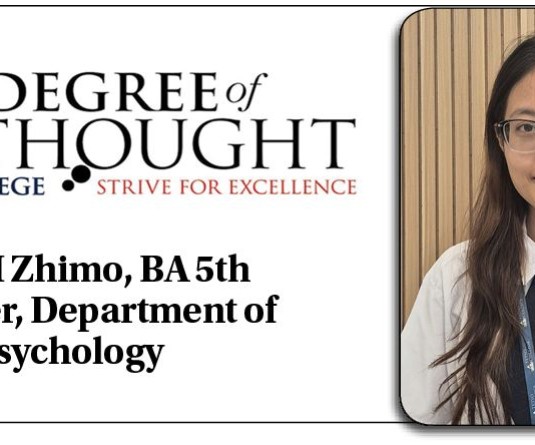
Zhetoli N Shohe, 2nd Semester, Dept. of Political Science
“What is a country? When people say, “Tell me about India”, I say, “Which India? The land of poetry? The one that produces haunting music and exquisite textiles? The one that invented the caste system? The country of dollar billionaires? Or the one in which 800 million live on less than half-a-dollar a day? Which India?”Arundhati Roy herself fights with the conundrum. The year 1950 marked the abolishment of Caste System but the question remains - Is Caste System really outlawed from the minds of the layman?
India’s caste system is among the world’s oldest ongoing and surviving social stratification as stated by the BBC which is existing for nearly two thousand years. The caste system is based on social distinctions in Hinduism, delineating four major “varnas” or social classes. The Brahmins described as the priests and scholars are on the top, the Kshatriyas described as the nobles and warriors come second, the Vaishyas described as business owners come third, and then the Shudras described as labourers or servants come fourth. The fifth group the ‘Untouchables’ - presently called the Dalits – a group that is often completely ostracised in the traditional Indian society.
The fight against the never-ending caste pandemic began from time immemorial. Gautam Buddha, Mahavir, Carvaka, Emperor Asoka, Emperor Kanishka, Sant Ravidas, Sant Kabir, Sant Tukaram, Sant Guru Nanak, Sant Narayana Guru, Sant Nandanar, King Shivaji Maharaj were the prominent figures in ancient and medieval India, who stood up against the caste system. In the modern era, Jyotiba & Savitribai Phule, Chhatrapati of State of Kolhapur Shahu Maharaj and finally Dr Babasaheb Ambedkar have openly rejected caste system. Dr Ambedkar, through his struggles and battles, freed the downtrodden people from the religious, cultural and social chains that enslaved them for ages. The venom of the caste system did not remain contained within the folds of Hinduism, but spread into other religions as well. Dr Ambedkar observed that many higher caste people who converted from Hinduism to other faiths carried their caste-baggage with them, consequently introducing ‘caste’ in those religions and perpetuating and ‘exactly’ imitating the practice.
Article 17 of Constitution of India abolished ‘Untouchability’; consequently the ‘Caste Discrimination’, however, the notion of ‘caste supremacy is so deeply rooted in the minds of the people that it could not be completely annihilated by the law. Atrocities against the community are regularly reported in the media. In Dehradun, a nine-year -old Dalit girl was allegedly raped by upper caste youth while in Unnao, Uttar Pradesh, spurned youth poisoned three Dalit girls. In Pune, Maharashtra, Dalit boy who chose to marry an upper caste was beaten while an activist under protection in Rajkot, Gujarat, was killed. In an interview by BBC, Dalit women recalled their ordeal of not being able to choose the same pathway and dignity as the other groups, and their status being at the bottom of caste and gender. In the midst of COVID-19 Pandemic, Dalit migrants in Uttar Pradesh in an interview spoke about the pain they suffered stating that nobody wanted to come in contact with them and the village has produced only two castes- ‘prawasi’ (outsider)’ and ‘niwasi (insider)’. The pandemic changed the dynamic of untouchability in Indian society which brought a type of horizontal untouchability.
The cycle of caste atrocities is never-ending. Despite constitutional guarantees, protective legal measures and welfare schemes ‘Caste Discrimination’ and ‘Atrocities against Dalits and Aborigines’ reportedly continued. This reminds me of a quote by Dr Ambedkar: “However good a Constitution may be, it is sure to turn out bad because those who are called to work it, happen to be a bad lot. However bad a Constitution may be, it may turn out to be good if those who are called to work it, happen to be a good lot.”
The question of ‘caste discrimination’ was never limited only to the castes which had been officially identified and recorded in the list of Scheduled Castes. In fact, the forest dwelling Tribes - the aborigines, according to various references, were also victim of this unique system of discrimination. They were also considered like outcastes people by the same caste system which considered their brethren from ‘outcaste’ communities as ‘untouchables’. This could be the reason why no higher caste community from ‘surrounding’ civilization was willing to make contact or relationship for centuries with the forest dwelling aborigines before Christian Missionaries from distant lands reached to them. Also, because of the social status absolutely identical with that of the Scheduled Castes, Dr Ambedkar protected the interests of Scheduled Tribes in the Constitution of India. It is important to note that the Scheduled Caste/Scheduled Tribes (Prevention of Atrocities Act) 1989 protects the rights and dignity of both Dalits and Aborigines. It may not be wrong to say that the racial discrimination meted out against ethnic tribes in the northeast India has its genesis in ‘Caste System’.
So, where does the ‘cure’ lie to this caste pandemic? It lies in educating and uplifting ourselves where we can challenge the social status quo and show to the world that we are no less than anybody in terms of intellectual capacity and competitiveness; and therefore, deserve to be in the position from where we can give direction to the destiny of our people and this nation to the positive and glorious ‘inclusive’ future. As a student, I see that “Education” is the only way to make ourselves capable to positively ‘agitate’ in life to finally get ‘organised’ ‘together to claim our rights ‘With the Rights’ that we have in the Constitution of India. It is the “True and Final Path to The Liberation, Freedom and Justice” and final cure to the pandemic of ‘social discrimination’- this is what I learn in my college which has a vision “To Create a Positive Impact in the World” and motto “Strive For Excellence”.
Degree of Thought is a weekly community column initiated by Tetso College in partnership with The Morung Express. Degree of Thought will delve into the social, cultural, political and educational issues around us. The views expressed here do not reflect the opinion of the institution. Tetso College is a NAAC Accredited UGC recognised Commerce and Arts College. The editors are Dr Hewasa Lorin, Dr Aniruddha Babar, Nisha Dahiya and Meren. For feedback or comments please email: dot@tetsocollege.org






